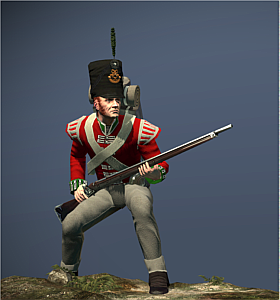Difference between revisions of "Light Foot (NTW Unit)"
m (updated to new template) |
Tango12345 (talk | contribs) m (Quick-adding category "NTW Infantry" (using HotCat)) |
||
| (One intermediate revision by the same user not shown) | |||
| Line 20: | Line 20: | ||
*[[Image:uk.png|25px]] [[Great Britain (NTW Faction)|Great Britain]] | *[[Image:uk.png|25px]] [[Great Britain (NTW Faction)|Great Britain]] | ||
| − | [[Category:NTW | + | |
| + | [[Category:NTW Units]] | ||
| + | [[Category:NTW Infantry]] | ||
Latest revision as of 07:52, 30 May 2017
These light troops are ideal for harassing the enemy from a distance.
Overview
Light Foot are an adaption of the standard men of the Line. They use their surrounding to their advantage and can skirmish ahead of the main amry, inflicting casualties before the battle has actually began. This unit is also are much more accurate than other uits of the line because of the extra training they undertake. Despite all of the advantages, Light Foot are still very vulnerable to cavalry due to their inability to form square. They are also ill equipped to fight in a prolonged melee.
Historically, the British army traditionally recruited its riflemen and light troops from German states, but as France expanded into Holland in 1799, Britain was forced to rethink its recruitment strategy as the north German states were no longer quite so accessible. Many of the foreign troops in British service had perished in the West Indies or been drafted into the 60th Royal Americans. With few light troops available, General John Moore established a camp at Shorncliffe, Kent in 1802 for the instruction of light infantry. It took a year before the first unit of line infantry was converted into a British light infantry regiment.
